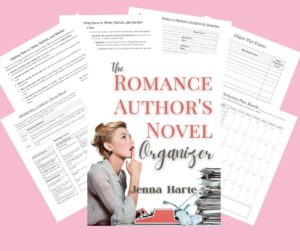NaNoWriMo’s Over, Now What? (7 Next Steps)

Whew! What a month, eh?
But…it’s not over.
While the NaNoWriMo challenge ends on November 30th, your work has only just started.
Here are your next steps after NaNoWriMo:
1. Celebrate
Whether you hit the 50,000 word mark or not, if you wrote during November, you have the beginnings of a book! I read a stat once that said 81% of people say they want to write a book, but most never put BIC (butt in chair) and write. You did! You’re already ahead of the game. Celebrate that!
2. Take Stock of Your Manuscript
During NaNoWriMo, there’s little time for anything but adding words to the page. Now you can take a breath and figure out what’s up with your book. Some things to assess are:
- Did you complete a draft? Even if you hit the 50k mark, you might not have finished the book.
- If you didn’t finish, how much left do you have to write?
- Did your book veer off the path? If so, where and do you want to keep going there or turn back to the plot?
3. Make a Plan to Finish Writing
December 1 is the most dangerous time for your manuscript. You’re taking a breath and thinking about how you don’t have to write now, which could lead to your manuscript languishing, unfinished forever. While you don’t need to keep up the NaNoWriMo pace, you don’t want to stop either.
After a month of writing, you may now have a schedule that works for you, in which case, stick with it and finish your book. But if the pace was too fast and furious to maintain beyond 30-days, create a new schedule and routine for writing. November should have given you some ideas on your peak writing times and sweet spot for single-session word count. For example, perhaps you found it easy to crank out 800 words at lunch. You can create a new schedule to write at least 800 words during lunch.
4. Revise Your Manuscript
Some writers will tell you to take a break from your book. Others dive right into revision. Like most other aspects of writing, you need to figure out what works best for you. I know authors who take a month or more away from their first draft, but they’re usually writing their next book at that time. Me? I give myself a day or so, but then I’m right back into the book. For me, I don’t like dangling projects, but also, staying close to the book means it’s still living inside me and therefore easier to access all the ideas and feelings I was striving for.
Once you know when you’ll revise, you need a process of revision. This too will depend on what works best for you. If you’re a new writer, you’ll need to test out different strategies. Here’s mine:
1. Read through the manuscript: My first pass is a macro view of the book. The goal here is to experience the book as a reader to figure out if it works and if it doesn’t, the areas that are falling short. I look for obvious errors in content such as inconsistent names (Yes, I’ve accidentally changed characters’ names), character development, timeline, plot holes, pacing, and continuity. During this pass I check spelling, grammar, punctuation and wrong word choice (e.g. too instead of to), as well. To get a bird’s-eye view of the MS, you can’t stop to edit for too long, but I find it impossible not to fix the quick issues, or I use the comment feature in Word to leave myself a note about what needs to be done. Since I’ll read through it again (likely several more times), if I get caught up in re-writes at this phase, I don’t worry too much.
2. Check each scene has a purpose: Remember, everything you write should tell us something about the character or move the plot forward. Here’s what I look for:
Each scene should have…
| At least one: Plot purpose Character goal Action to advance plot Action to increase tension |
At least two: Character development Cause for character conflict Effect of character conflict Raised stakes Reinforcement of stakes Character motivation |
Bonus: Character backstory World building Tone/mood Theme Foreshadowing |
Note that no scene should have only bonus content.
The next few items I check for used to be separate passes of the book. Thank goodness for tools like ProWritingAid and Autocrit that can help you identify and fix the issues below:
3. Reduce or eliminate weak words: These are words that aren’t needed and can take the oomph out of your writing. They include words such as:
- Weak or Vague Words
- Felt
- Took
- Gave
- Very
- A lot
- Really
- Often
- Always
- Sort of/Kind of
- To Be Verbs
- Thought /Sight/Hear Words
- Thought
- Realized
- Noticed
- Saw
- Heard
- Wondered
- Others
- Beginning/Began
- Starting/Started
- That
- Now
- Just
- And (at the beginning of sentences)
- But (at the beginning of sentences)
- So (at the beginning of sentences)
- Well
- Up/Down
4. Fix passive sentences: For more on passive voice, check out my video on when it’s okay to use and when you shouldn’t (which is most times). This video also will help you find passive voice if you’re not using an editing tool like ProWritingAid (e.g. look for to-be verbs).
5. Reduce or eliminate adverbs: You can instantly beef up or writing, making it more dynamic by using strong verbs. That means reducing to-be verbs and adverbs. If your word processing or editing tool doesn’t identify adverbs, do a search for “ly” in your manuscript, and replace with stronger, more illustrative verbs.
6. Replace dialogue tags: I know an author who wrote a book without a single dialogue tag. Luckily, you don’t have to go that far. But dialogue tags are telling and whenever you can replace it with action, thought, or feeling, you’ll give the reader a more immersive experience. To find these, search for “said,” “asked,” etc or just deal with as you read through the manuscript.

5. Get Feedback
If you’re not already in a critique group, which can be a big help during your revision, now is the time to get fresh eyes on your book. This is the time to find alpha readers (readers who give feedback on the book for editing and revision purposes). If possible, find a couple of readers who are authors, and some who are readers. This will give you the benefit of an author’s expertise, but also the reader’s experience.
6. Revise Again
Once you have your feedback, it’s time to decide what has merit and what doesn’t. You should consider all feedback and be thankful to the readers who’ve taken the time to provide it. But just because you’ll read it and consider it, doesn’t mean you’ll use it. Sometimes feedback is helpful, such as accidentally messing up the timeline or forgetting to fill a plot hole. Other times, the suggestions will be ideas you won’t use, but they can still give you insight into where your writing failed to do its job.
7. Decide Your Book’s Future
This is where you make the decision to publish, or not. And if you decide to publish, what route will you take? Traditional or self-publishing. Each option has different tasks. Whichever you choose, you should have a professional edit. But if you’re self-publishing, you absolutely need to hire an editor.
Traditional Publishing
- Write a synopsis
- Write query letter
- Formant your MS (double-space, Times New Roman, 12pt, 1 inch margins) – Always follow agent/publisher guidelines for formating and submitting.
- Prep 3 chapters
- Research agents/publishers that represent/publish your category of romance
- Read submission guidelines
- Submit per the guidelines
Self Publishing
- Have a professional edit
- Format your MS (You can use Vellum or Atticus to make this easy for ebook and print)
- Write blurb
- Order cover
- Write front and back matter (author bio etc)
- Make launch and marketing plan
- Upload for presale
- Send ARCs to beta readers and reviewers










Responses